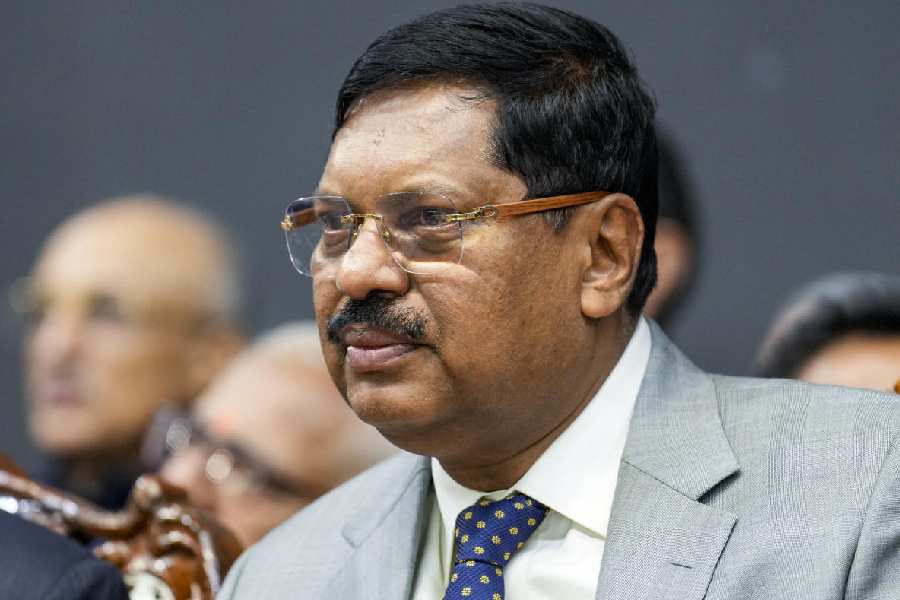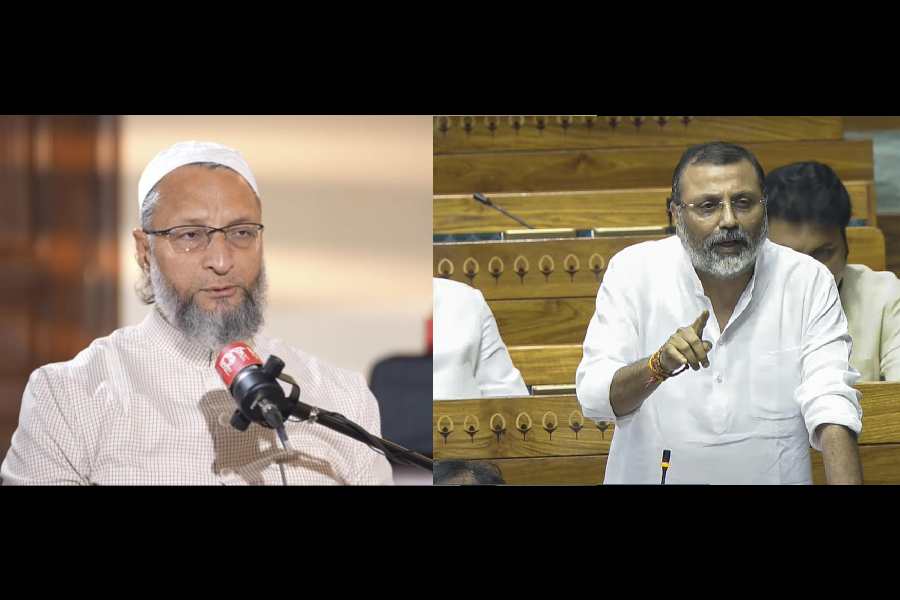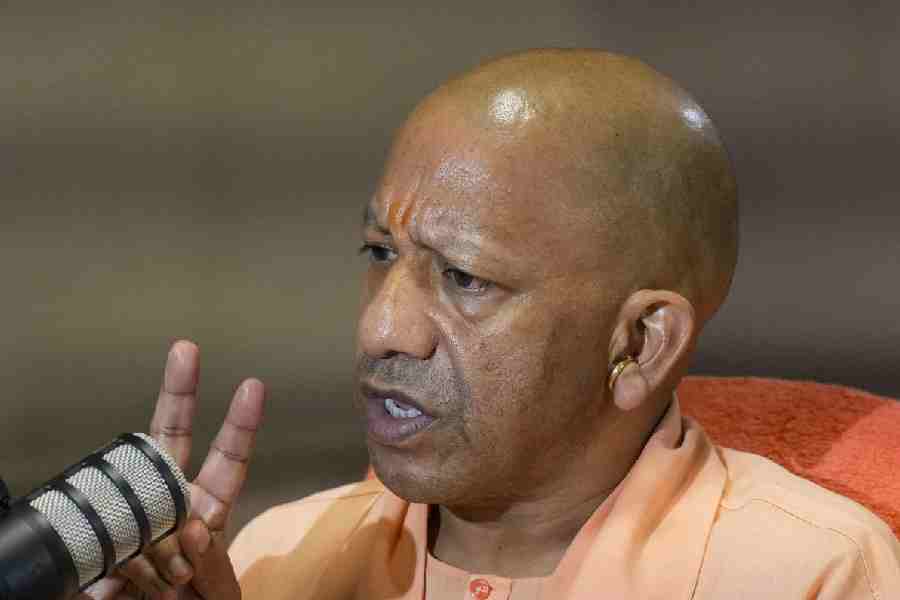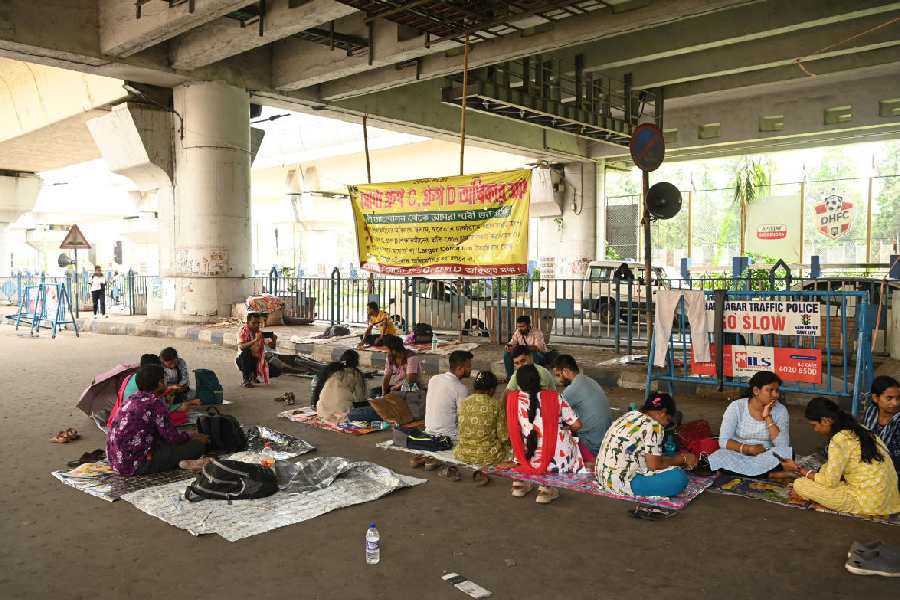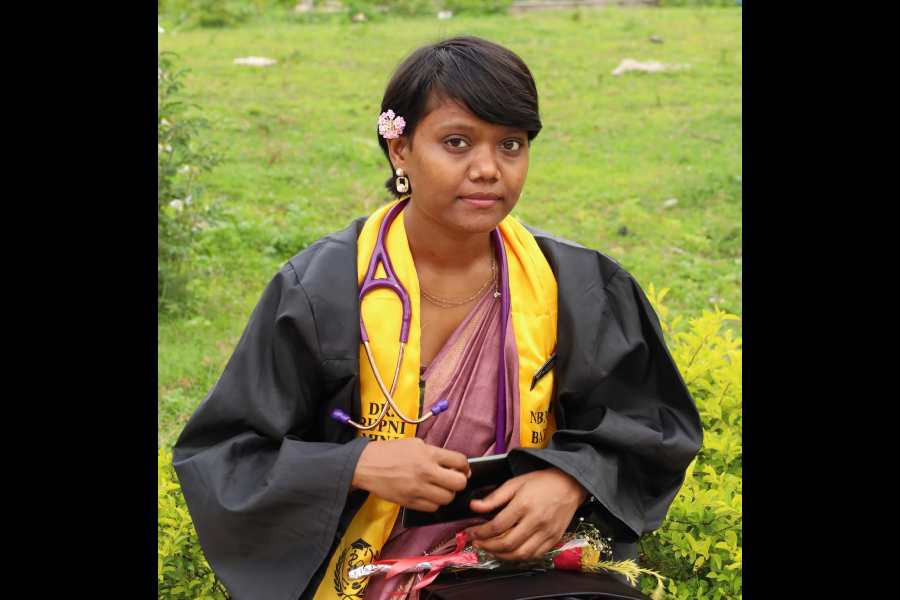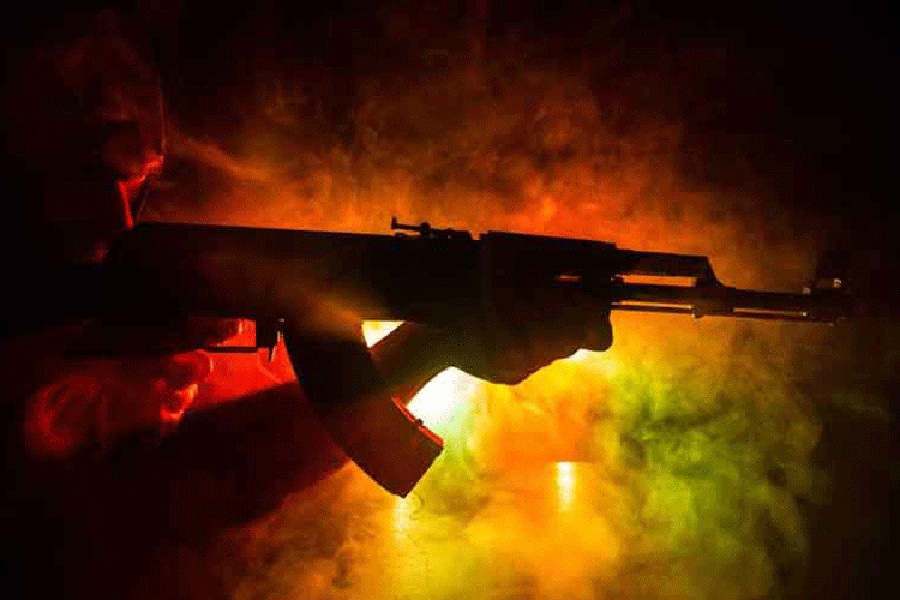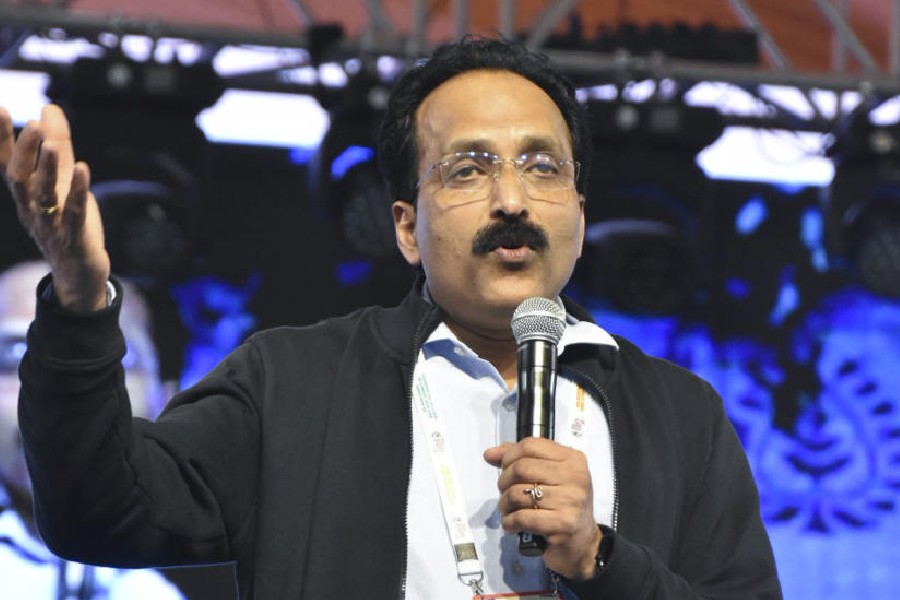 |
| The new wing of the National Gallery of Modern Art in New Delhi. Picture by Ramakant Kushwaha |
New Delhi, June 20: The National Gallery of Modern Art has expanded to six times its size with the construction of a 27,000sqmt new wing.
The museum, which sits on a 7.84acre complex near India Gate, will now have eight times more gallery space to show its collection of 16,000 works.
A 240-seater auditorium, with which the NGMA hopes to revive its film club, a preview theatre, lecture halls, conservation laboratories and large empty spaces that can house mammoth installations, such as Anish Kapoor’s larger-than-life creations, are other new features visitors can look forward to.
“This extension will make NGMA the cultural hub of Delhi,” said NGMA director Rajeev Lochan. “The galleries will remain open from 10am till 6.30 in the evening. But with the preview theatre and lecture halls, we have a place that will remain alive after that too.”
The museum is looking to become more visitor-friendly. Touch screens in the reception area will allow visitors to browse through the exhibitions and choose the gallery to visit. The screens will also show an events calendar.
“This was a much needed extension,” said .P Jain, a Delhi-based art collector. “It will fill in the gap which was felt for a long time and especially now, when Indian contemporary art has found space on the world map.”
 |
Delhi is hoping the expansion, being planned since 1985, will take the NGMA to the league of London’s Tate Modern, Amsterdam’s Rijksmuseum and The Met in New York.
Unlike Kolkata’s Museum of Modern Art, which will make a bold statement even with the building, the NGMA’s just-constructed new wing quietly blends with the historic Jaipur House that houses the museum now.
“We had to keep the essence of the earlier building,” said A.R Ramanathan, the architect who won the competition for building the new wing over 20 years ago. “We had to match the original stone, which was not easy.”
The old building, which had high ceilings and a period feel, used to be the residence of the Maharaja of Jaipur. Once the new wing opens, the older wing will be used to display works of the Bengal period. The museum has collections of the works of Abanindranath Tagore, Gaganendranath Tagore, Rabindranath Tagore, Nandalal Bose and Jamini Roy.
Only the interiors of the new wing remain to be done, but officials in the ministry of culture are vague about when it will open. “The museum has written to the ministry asking for more staff. The proposal is being considered favourably,” a senior official said.
A sense of space greets visitors who walk up the rose pink steps into the new wing, with its very high ceiling. The NGMA is in talks with Anish Kapoor, the India-born British sculptor, to host one of his installations.
“This space is designed to be a museum, unlike the existing structure, which was the winter palace of the Jaipur Maharaja converted into a museum,” said Ramanathan. “Visitors will be able to perceive this difference.”
The architect promises that one day will not be enough to see the museum, which can now show only 4 per cent of its art collection.
The new wing also houses temporary galleries for visiting exhibitions. These have collapsible walls and different heights, so that each “feels” different.
“There will also be a museum shop,” said Ramanathan. “It won’t be like the single desk that the museum has at the moment.”
Visitors who come after the galleries have closed for the day can walk into the preview theatre and perhaps listen to a lecture by an art historian in the Louvre in Paris — the NGMA now has the facilities to arrange this.
Indian museums, in spite of having precious collections, are seen as dry and boring and are under-visited. Unlike the museums in the West, they are not seen as places where art and history come alive.
The NGMA hopes to overcome this mental block, by involving newer forms of expressions to draw the youth.
“Technology over the years has taken a form of art,” said Lochan. “We will incorporate video art in a gallery. We want artists from other countries to be able to come here, create a piece in this medium and leave a copy for us. The process has already started with a group of Japanese artists from New York.”
Once the new wing opens, the museum hopes it will get the label it so desperately covets — world class.


